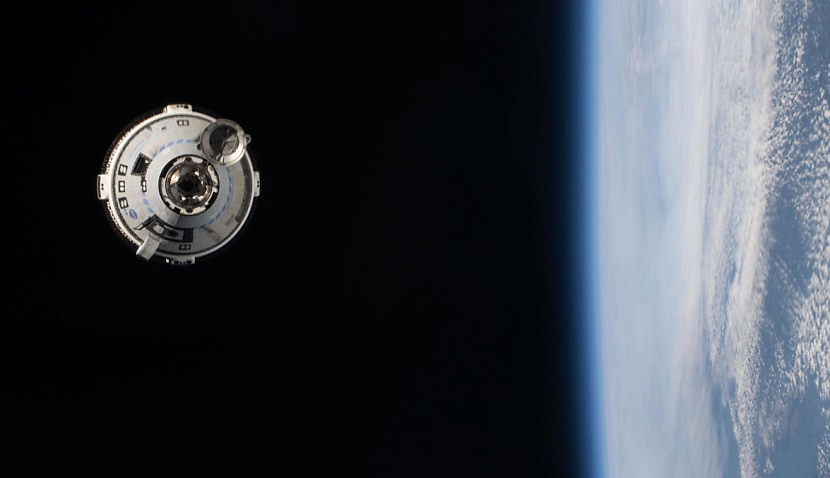
However, the agency continued to play down its problems, arguing it felt “very confident” in the thrusters and revealing that helium leak rates had reduced ahead of a 25 June undocking.
Starliner finally blasted off to the ISS earlier this month on its historic first crewed mission after a series of delays. It originally aimed to return after just a week.
In a briefing on Tuesday, Steve Stich, NASA commercial crew program manager, said the delay would give the team “a little bit more time to look at the data, do some analysis and make sure we’re really ready to come home”.
The work will include firings of several aft-facing reaction control system (RCS) thrusters. Five were shut down as Starliner approached the ISS before controllers restored four to allow docking.
“We feel very confident in the thrusters and the team is just making sure to go look at the thrusters in detail across the whole flight,” said Stich.
The team also used a thruster test to check on the helium leaks detected, which, in every case, had gone down.
Starliner can stay docked for a maximum of 45 days on its current mission, though it is designed to stay at the ISS for up to six months eventually.
“Following undocking and the deorbit burn, Starliner will descend under parachutes to land in the desert grounds of White Sands,” said Boeing. “Airbags attached to the bottom of Starliner will soften the spacecraft’s touchdown.
“The landing will mark the first time an American capsule has touched down on land with astronauts aboard. A team of NASA and Boeing specialists will retrieve the crew soon after landing.”
It comes after Space Connect reported last week how NASA found a fifth helium leak on Starliner, though insisted the spacecraft has “plenty of margin” to support the trip back to Earth.
NASA uses helium to keep hot gases and ultra-cold liquid fuel separated during blast-offs, which is why it had the potential to affect both the lift-off and undocking.
“Only seven hours of free-flight time is needed to perform a normal end-of-mission, and Starliner currently has enough helium left in its tanks to support 70 hours of free-flight activity following undocking,” NASA said.
“While Starliner is docked, all the manifolds are closed per normal mission operations, preventing helium loss from the tanks.”
NASA has a lot riding on the success of Starliner, given that it is currently only able to send astronauts to space via SpaceX’s Dragon capsule.
The current mission – with astronauts Barry “Butch” Wilmore and Sunita “Suni” Williams onboard – is the final test flight before NASA certifies the vehicle for regular operational missions starting as soon as next year.
Starliner was initially due to blast off to the ISS earlier last month, but the first attempt was scrubbed at the last minute because of a faulty valve on the rocket’s Centaur upper stage.
A subsequent try on 17 May was also repeatedly delayed, this time due to a helium issue. Finally, a third problem was found to be linked to a flange in a thruster in the spacecraft’s service module.
May’s scrubbed launches are the latest in years of issues for Starliner, which Boeing hopes will be able to regularly send US astronauts into space much like SpaceX’s Dragon capsule.
Starliner’s first attempt at a flight without humans onboard failed in 2019 due to software glitches, but it eventually docked with the ISS in May 2022.

Adam Thorn
Adam is a journalist who has worked for more than 40 prestigious media brands in the UK and Australia. Since 2005, his varied career has included stints as a reporter, copy editor, feature writer and editor for publications as diverse as Fleet Street newspaper The Sunday Times, fashion bible Jones, media and marketing website Mumbrella as well as lifestyle magazines such as GQ, Woman’s Weekly, Men’s Health and Loaded. He joined Momentum Media in early 2020 and currently writes for Australian Aviation and World of Aviation.
Receive the latest developments and updates on Australia’s space industry direct to your inbox. Subscribe today to Space Connect here.









